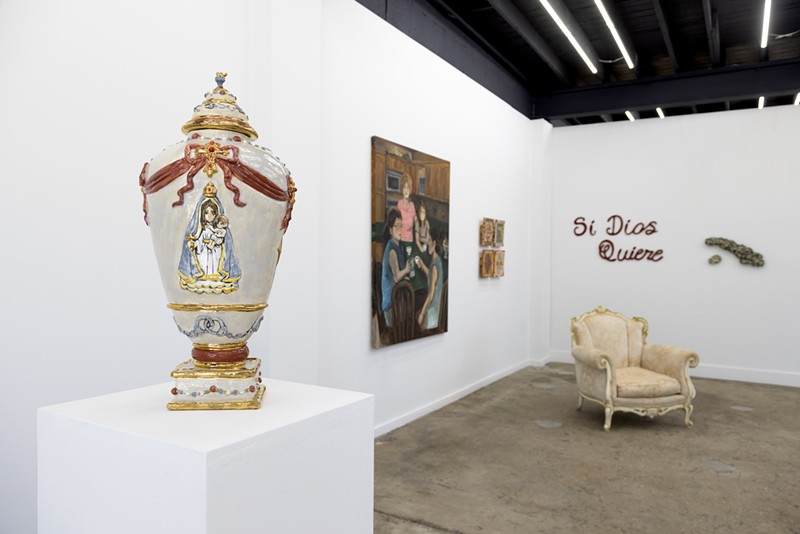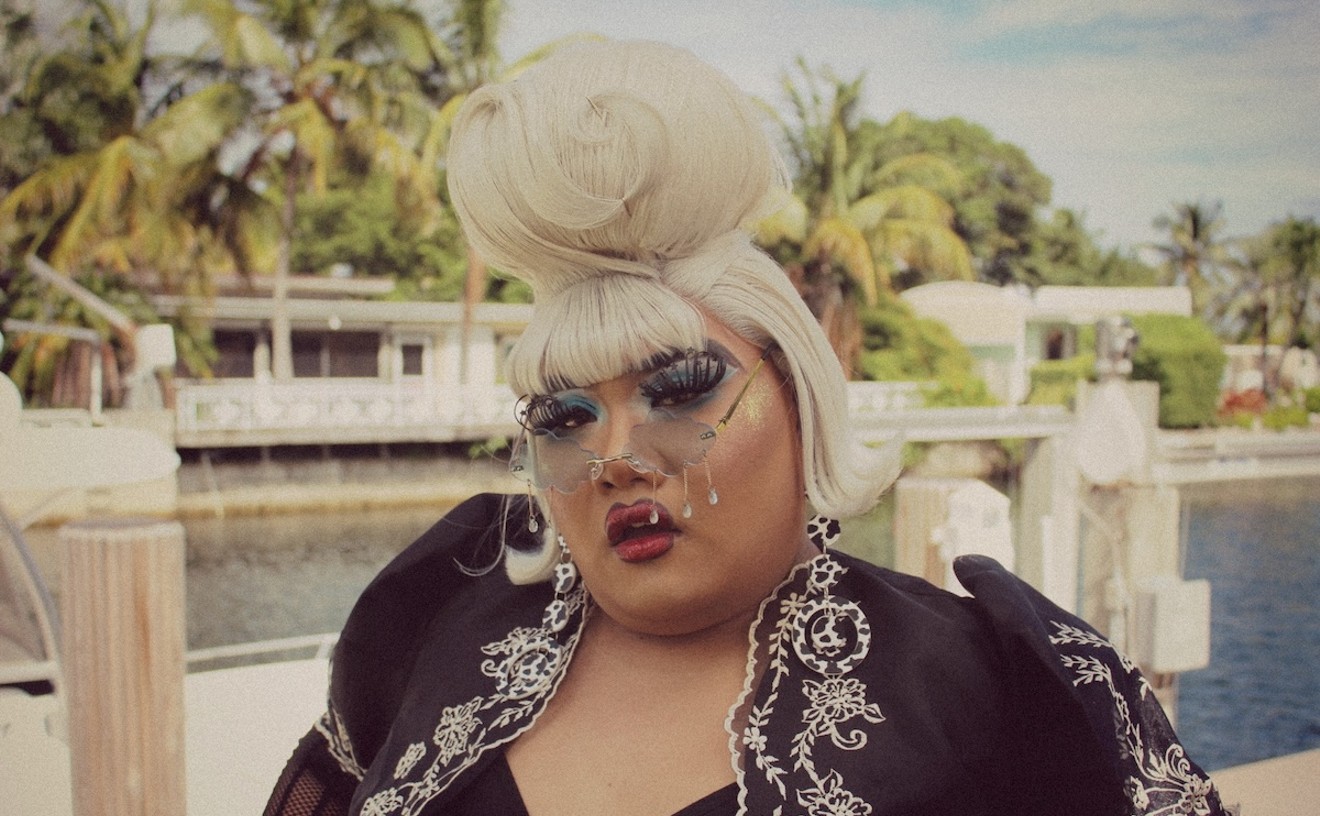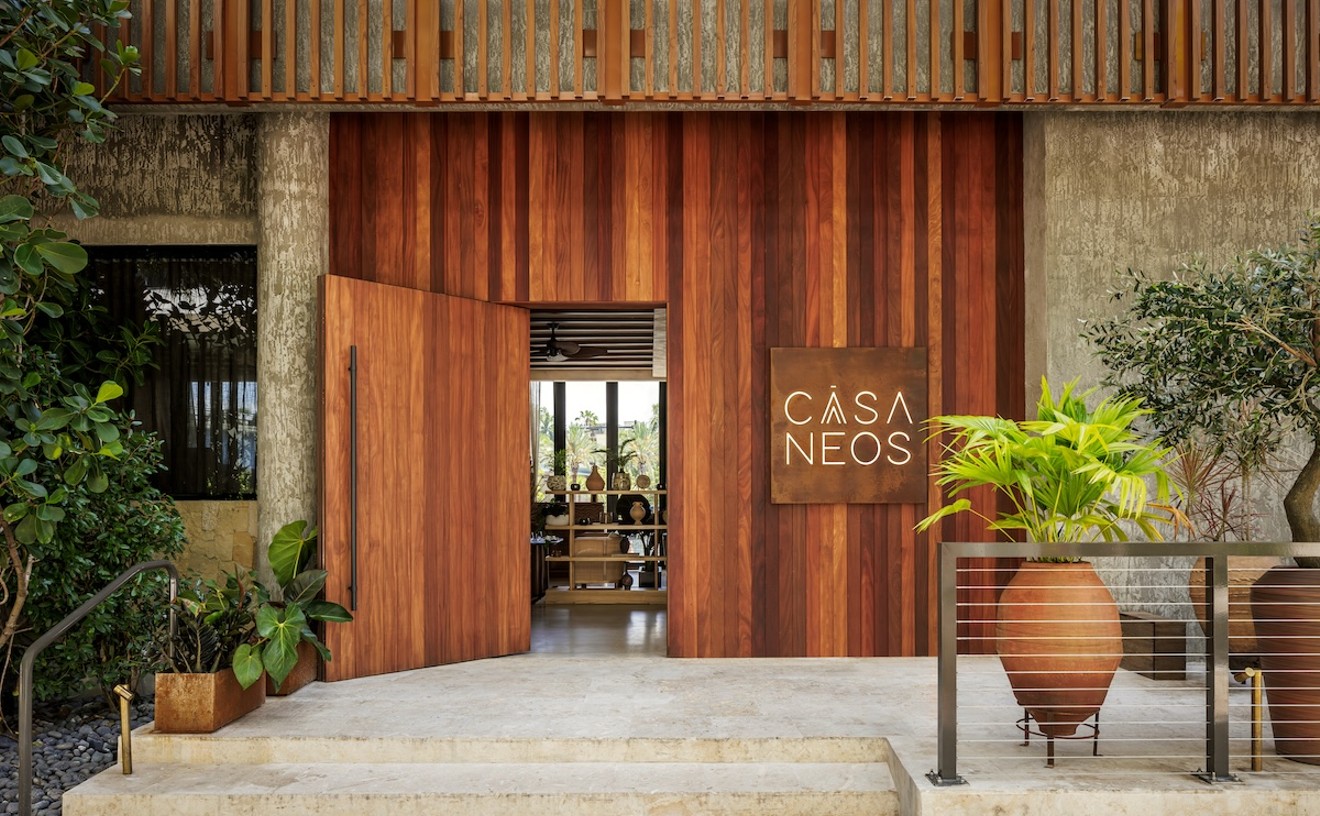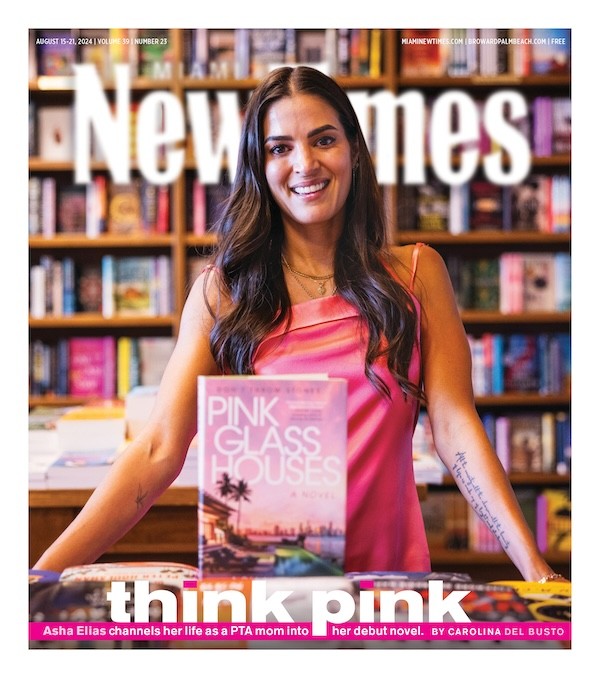The exhibition gets its name from the WPBT show ¿Qué Pasa, USA? which followed the misadventures of the Peña family. It mirrored the experience of many Cuban-American families trying to make a life for themselves in the U.S. during the 1970s and '80s and broached many subjects that immigrant families still grapple with today. Efforts to maintain a memory of a place that no longer exists, the Americanization of the children who have mostly forgotten Cuba, and the barriers imposed by language, class, and culture were coupled with the comic relief of silly fights and biting humor.
Using this iconic TV series as a conduit for the Ferrers' art is not only fun and exciting but very clever, making their works immediately accessible to a large portion of the local population, regardless of their knowledge of contemporary art. Beyond just doing work that reflected ¿Qué Pasa, USA?, the twins provide the viewer with a snapshot of the imagery and styles of the era to discuss the challenges of immigrating to America.
The first piece that may catch your eye is Ofelia, a painting reminiscent of your Cuban grandmother's sala (living room), complete with square porcelain tiles, a coffee table cluttered with family photos in gaudy, golden picture frames, deep-red couches that undoubtedly were at one point in time covered in plastic, and a large potted plant that is most likely made out of plastic and wire. In it, a woman rests on one of the couches in her house chancletas. It's a tender moment at home, where viewers can envision a quick rest during a hot summer afternoon. Its linearity begets a certain naivety, reverberating through the rest of the work in this exhibition.
Another highlight is Unfamiliar View, the only landscape in the show. Through ornate railings still covering windows in neighborhoods like Little Havana, Coral Gates, and Hialeah, your eyes make out the fuzzy view of a coastline. Sarah says the obscured image of the beach references the fuzzy memory of Cuba that only lives with her through family stories. It's a feeling of knowing a place without actually knowing it that many Cuban-Americans can relate to.

Samantha and Sarah Ferrer's work is at times nostalgic, at times symbolic, at times fun and kitschy.
Mahara+Co photo
In works like Bahía de Nipe and Retrato de Familia, each sister translated their maternal and paternal stories into large vases. Retrato de Familia features a family portrait with a plane flying in the background on the side of the vase. The portrait features the mother holding a baby in her arms as her husband and children look forward, determined and stern. On the top of the vase is a golden flame, a subtle nod to the Statue of Liberty and New York City, where their family first arrived from Cuba before finally settling in Miami.
Meanwhile, Bahía de Nipe tells the story of resilience and faith. Handcuffs line the bottom of the vase in reference to a family member who was held as a political prisoner in Cuba. On one side of the vase's body is a representation of La Cachita, also known as la Virgen de la Caridad, Cuba's patron saint. Worshiped by both Catholics and Santeros, the colonial-era statue is housed at la Basílica Santuario Nacional de Nuestra Señora de la Caridad del Cobre El Cobre, Cuba, with a local replica found at Ermita de la Caridad in Coconut Grove. The top of the vase is adorned with crosses, Cuban flag rosaries, and broken chains to celebrate their grandfather’s eventual escape to the U.S.
One of the priorities Samantha and Sarah share is making art accessible. They want to build a bridge between the community they grew up in and the contemporary art circuit that often feels disjointed from what the everyday Miamian sees fitting to call art. In the local art scene, spaces open to the public are only frequented by the same people who are "in the know."
With "¿Qué Pasa, USA?," the Ferrers and gallerist Mahara Martinez present works that are intimately approachable to locals without sacrificing technique or depth.
"¿Qué Pasa, USA?" On view through Saturday, August 25, at Mahara+Co, 224 NW 71st St., Miami; 786-498-8706; mahara-co.com. Tuesday through Saturday 11:30 a.m. to 5:30 p.m.












